Maionnette Mediterranee Blanc 2023
| Country: | France |
| Region: | Provence |
| Winery: | Maionnette |
| Grape Type: | Rolle |
| Organic: | Yes |
| Vintage: | 2023 |
| Bottle Size: | 750 ml |
Maionnette Mediterranee Blanc is made from 30% Rolle, 30% Viognier, 20% Semillon and 20% Sauvignon Blanc.
Domaine de la Maïonnette is produced from grapes benefiting from an ideal location next to the river and planted on a clay-limestone based soil with a silty character, which brings suppleness, roundness and lightness to the wines.
La Maionnette is a brilliant straw yellow colored white offering delicate aromas of citrus fruits, and fresh notes of pear and apricot. Rich and round on the palate, and a good balance.
Cazaux Vacqueyras Blanc Les Clefs d'Or is made from 50% Clairette, 30% Roussanne and 20% Grenache Blanc.
A wine with lively acidity, expressive aromas of fennel and white flowers. It is long and full in the mouth with minty and anisy aromas mixed with white peach flavors. Refreshing and mineral character.
Clairette grapes are green harvested to concentrate and harmonize aroma. Each grape varietal is hand picked separately. Pressing with skin contact at low temperature. Aged 12 months in stainless steel tank. (No oak)
Enjoy this wine with all sorts of fish starters, squid salad with olive oil and basil. A must try with fresh oysters.
Review:
"Exotic citrus, pineapple, baking spices, and minty flower notes emerge from the 2023 Vacqueyras Les Clefs D'Or Blanc, a medium-bodied, juicy, lively, balanced white that has the vintage's ripe yet pure, layered, focused style. It's incredibly well done and worth your time and money."
- Jeb Dunnuck (April 1st 2025), 92 pts
Domaine de Beaurenard Chateauneuf-du-Pape Blanc is made from Clairette blanche & Rose, Grenache Blanc & Gris, Bourboulenc, Roussanne, Picpoul and Picardan.
Gold bright green color. Expressive nose with pear and stone fruits aromas (peach, apricot) with jasmine and roasted almonds notes. The mouth is smooth and fleshy like stone fruit we can smell, with a long a nice finish.
Review:
Always terrific, the 2023 Châteauneuf Du Pape Blanc is no exception, and readers who love vibrant, age-worthy Rhône whites can safely buy this cuvée in just about every vintage. Based on 30% Clairette, 20% Grenache Blanc, 25% Bourboulenc, 22% Roussanne, and splashes of Picardan and Picpoul Blanc, the 2023 reveals a medium gold hue as well as textbook aromatics of pear and orchard fruits intermixed with honeyed flowers, chalky minerality, and subtle green almond nuances. This balanced, medium-bodied, vibrant white is very much in the fresh, focused, yet still textured, approachable style of the vintage.
-Jeb Dunnuck 93 Points
The 2023 Sauvignon Blanc shows abundant aromas of Meyer lemon, passionfruit, and jasmine. In the mouth, the Semillon shows itself with a rich, deliciously textured palate with flavors of orange blossom, mandarin oranges, and a wet stone minerality
Bertrand Bachelet Chassange Montrachet Blanc is made from 100 percent Chardonnay.
The Chassagne-Montrachet appellation is located in the southern part of the Côte de Beaune and produces mainly white wines. The vineyard faces east, with varied soil types, characterized by the presence of iron oxide, which gives a red-brown color to the soil.
Bertrand Bachelet Chassagne-Montrachet is produced from two villages, La Canière and Les Lombardes.
The wine offers a golden color, a soft, floral nose with spicy notes. On the palate, the wine is ample and harmonious, combining freshness and tension.
Pairs well with fish (especially salmon) or white meat in sauce (poultry, veal).
Bertrand Bachelet Maranges Blanc 1er Cru La Fussiere is made from 100 percent Chardonnay.
The Maranges appellation is the youngest of the Côte de Beaune family, making its debut in May 1989. It spans three villages, namely Dezize-lès-Maranges, Cheilly-les-Maranges and Sampigny-les-Maranges. Several hills and slopes make up this appellation, all south/south-east-facing, at an altitude of between 200 and 400 metres. The Maranges 1ers Crus are spread over seven distinct villages.
'La Fussière' is the main village of the Maranges appellation and is located in the Cheilly and Dezize-les-Maranges areas.
This wine has a pale gold robe, with plenty of sparkle. At first, the nose evokes notes of white flowers, like acacias, then the second nose delivers a flinty, slightly buttery aspect. Plenty of versatility and subtlety on the palate, with floral notes.
A good accompaniment to a cold starter or fish. Try with a slightly sharp hard cheese, such as Cantal or Gouda, to draw out its natural vivacity.
Maionnette Mediterranee Blanc is made from 30% Rolle, 30% Viognier, 20% Semillon and 20% Sauvignon Blanc.
Domaine de la Maïonnette is produced from grapes benefiting from an ideal location next to the river and planted on a clay-limestone based soil with a silty character, which brings suppleness, roundness and lightness to the wines.
La Maionnette is a brilliant straw yellow colored white offering delicate aromas of citrus fruits, and fresh notes of pear and apricot. Rich and round on the palate, and a good balance.
Located in La Crau, a few kilometers from Pierrefeu, Domaine de La Maïonnette spreads on a 30 hectare-vineyard where the wines are grown with passion to express the best of its terroir. La Maïonnette has been an independent winegrower since 1913.
The vines are equally divided between two appellations: AOP Côtes de Provence and IGP Méditerranée.
In addition to the traditional rosé wines of Provence, Domaine de La Maïonnette offers high quality white and red wines.
The estate benefits from a Mediterranean climate, where winters are rigorous and allow the vine to regenerate more easily, and summers are hot, providing a beautiful maturity to the grapes. The sea breeze avoids radical changes in temperature.
The wines of Domaine de la Maïonnette reflect the elegance of the Provençal terroir, characterized by the hot and dry climate. The clay-limestone based soils represent an ideal place to grow the grapes thanks to their ability to retain the water better, while bringing body and power to the wine, and leaving them supple and round.
The night harvest - that favors the freshness of the aromas - and the vinification are also thought to enhance the quality of the grapes ripening under the Mediterranean climate.
The Malard family has been rooted in wine for 3 generations. In the 90s, Jean-Louis Malard developed his own Champagne wines. He quickly became one of the major players in the Champagne landscape. Passionate about wine and driven by entrepreneurship, he's always in the search for new challenges around his passion. Attached to the Provence region and the quality of the wines produced there, purchasing Domaine de La Maïonnette was the perfect match and the result of a long research and meticulous work.
- back
Guillemot-Michel Vire Clesse is made from 100 percent Chardonnay.
Beautifully expressive, with yellow fruits, orange blossom, smoke & flint. Thick and saline on entry, then seriously deep in the mid-palate, with suggestions of exotic fruits perfectly countered by strong minerality. This wine strikes a perfect balance between sweet and salty elements, and it shows vibrant acidity. It boasts a thickness that few other northern Mâconnais can match.
Enjoy with fish (such as sole meuniere), seafood, roasted chicken, goat cheese.

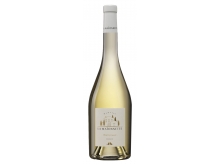
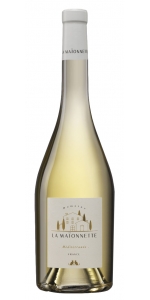
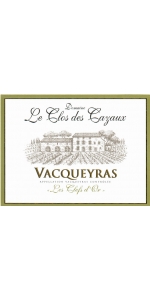
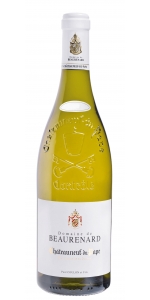
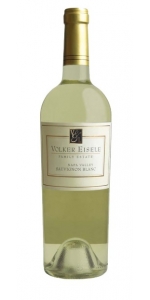
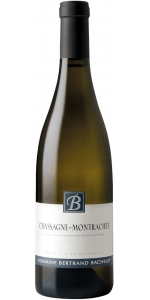
-150x300.jpg)



